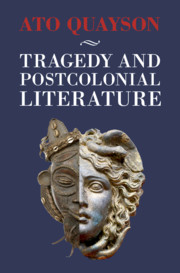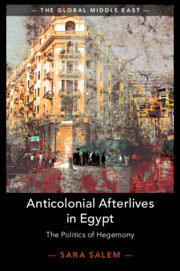Refine search
Actions for selected content:
15 results
Atmospheric violence: Fanon and postcolonial subjectivity
-
- Journal:
- International Theory , First View
- Published online by Cambridge University Press:
- 23 September 2025, pp. 1-23
-
- Article
-
- You have access
- Open access
- HTML
- Export citation
Chapter 11 - Mulk Raj Anand
- from Part II - 1900–1945
-
-
- Book:
- The British Novel of Ideas
- Published online:
- 05 December 2024
- Print publication:
- 12 December 2024, pp 192-206
-
- Chapter
- Export citation
7 - “That Is Lazy Journalism”
- from Part II - Narrating an Atrocity
-
- Book:
- In the Shadow of the Global North
- Published online:
- 13 November 2024
- Print publication:
- 07 November 2024, pp 143-160
-
- Chapter
- Export citation
19 - Decolonization and the Cold War
- from Part ii - Paradigm Shifts and Turning Points in the Era of Globalization, 1500 to the Present
-
-
- Book:
- The Cambridge History of Nationhood and Nationalism
- Published online:
- 27 October 2023
- Print publication:
- 09 November 2023, pp 421-441
-
- Chapter
- Export citation
1 - Empire, Popular Sovereignty, and the Problem of Self-and-Other-Determination
- from Part I - Imperial Popular Sovereignty
-
- Book:
- Democracy and Empire
- Published online:
- 24 August 2023
- Print publication:
- 07 September 2023, pp 29-59
-
- Chapter
-
- You have access
- Open access
- HTML
- Export citation
5 - Anti-Imperial Popular Sovereignty and the Politics of Transnational Solidarity
- from Part III - Anti-Imperial Popular Sovereignty
-
- Book:
- Democracy and Empire
- Published online:
- 24 August 2023
- Print publication:
- 07 September 2023, pp 169-192
-
- Chapter
-
- You have access
- Open access
- HTML
- Export citation
Conclusion
-
- Book:
- Tyranny and Revolution
- Published online:
- 28 May 2022
- Print publication:
- 19 May 2022, pp 263-298
-
- Chapter
- Export citation

Tragedy and Postcolonial Literature
-
- Published online:
- 05 February 2021
- Print publication:
- 21 January 2021
Chapter 1 - Introduction
-
- Book:
- Tragedy and Postcolonial Literature
- Published online:
- 05 February 2021
- Print publication:
- 21 January 2021, pp 1-43
-
- Chapter
- Export citation
Chapter 5 - Archetypes, Self-Authorship, and Melancholia
-
- Book:
- Tragedy and Postcolonial Literature
- Published online:
- 05 February 2021
- Print publication:
- 21 January 2021, pp 156-185
-
- Chapter
- Export citation
Chapter 3 - History and the Conscription to Colonial Modernity in Chinua Achebe’s Rural Novels
-
- Book:
- Tragedy and Postcolonial Literature
- Published online:
- 05 February 2021
- Print publication:
- 21 January 2021, pp 83-123
-
- Chapter
- Export citation
Introduction: Trapped in History
-
- Book:
- Anticolonial Afterlives in Egypt
- Published online:
- 10 April 2020
- Print publication:
- 30 April 2020, pp 1-28
-
- Chapter
- Export citation
1 - Hegemony in the Postcolony?
- from Part I - Anticolonialism and Its Discontents
-
- Book:
- Anticolonial Afterlives in Egypt
- Published online:
- 10 April 2020
- Print publication:
- 30 April 2020, pp 31-79
-
- Chapter
- Export citation

Anticolonial Afterlives in Egypt
- The Politics of Hegemony
-
- Published online:
- 10 April 2020
- Print publication:
- 30 April 2020
Writing against Mourning: Memory in Assia Djebar’s Franco-graphie
-
- Journal:
- Cambridge Journal of Postcolonial Literary Inquiry / Volume 6 / Issue 1 / January 2019
- Published online by Cambridge University Press:
- 07 January 2019, pp. 14-29
-
- Article
- Export citation
